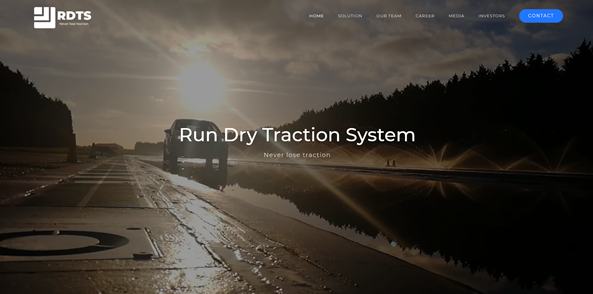As tyre experts, our job is to know what tyres are available on the market right now, so we can fit the most appropriate products and advise our customers. But we’re also interested in what’s coming up next in the tyre world.
For some years, the ‘intelligent tyre system’, or its hip cousin, the ‘smart tyre system’ have been touted as the next big thing that will revolutionise our driving. But ‘intelligent’ and ‘smart’ are such juicy marketing terms that they end up covering all sorts of different developments. Got a new tread pattern? Then it’s a ‘smart’ tread system, of course.
However, we have seen two ongoing tyre system developments that we think really deserve the label ‘intelligent’, because they both do something active to respond to current conditions.
The Run Dry Traction System
OK, we will admit that our first choice is more of a tyre support system than purely the tyre itself. But we think it’s so impressive that we couldn’t leave it out, and if this doesn’t count as intelligent, we don’t know what does.
The Run Dry Traction System (RDTS) is designed to reduce one of the biggest road surface safety hazards for drivers — aquaplaning. The system is the result of a two-year research project at Coventry University, headed by Ravi Ranjan and Professor Mike Blundell.
As you’ll know if you read our 2018 article on the subject, aquaplaning occurs when a thin layer of water sits between the tyre and the road. As we explained:
…under some circumstances, the tyre can’t disperse water quickly enough. Water pressure in front of the tyre builds up, creating a ‘wedge’ of water that lifts the front edge from the surface. This is aquaplaning. With reduced or zero contact with the surface, the tyre is skating over the water surface.
As a reminder of what aquaplaning involves, check out the video below (though it doesn’t make aquaplaning look too terrifying because it’s on a controlled test track).
At first sight, getting rid of this film of water would seem to be impossible. However, the Coventry University researchers have developed an ingenious solution.
As the RDTS website explains, under adverse conditions, the safety system:
…fires a high pressure [gas] jet during the first five seconds of braking when the traction is compromised due to surface contamination.
Trials have shown that the compressed gas jet is effective at dispersing water, allowing hugely improved traction during the first critical moments of braking. What’s more, the jet can disperse other substances that can compromise traction, like sand or gravel.
How can the system know when to deploy? By integrating information provided by onboard sensors. Many vehicles already use systems that monitor wheel slip. The RDTS system uses the information to infer the presence of surface contaminants and blasting them away.
The system has been designed to operate with many different types of vehicles, including cars, buses, and motorcycles. Beyond that, there are potential applications for aeroplanes, where good traction can be the difference between an uneventful landing and, in the worst scenarios, a disaster.
Whether the RDTS gets taken up by manufacturers is, of course, a different matter. However, with manufacturers perpetually locked in a safety ‘arms race’, odds-on that it would only take one company to start offering the RDTS before others rushed to include it.
In Part Two of this article, we will look at a system that’s within the tyre itself and also qualifies as truly intelligent.
The BK Tyres blog carries news, views and information on tyres and related subjects. BK Tyres supplies and fits tyres throughout South Oxfordshire, including the communities of Abingdon, Didcot and Henley on Thames. As an independent, family run mobile provider, we provide exceptional levels of service and affordable prices. Contact us today.

